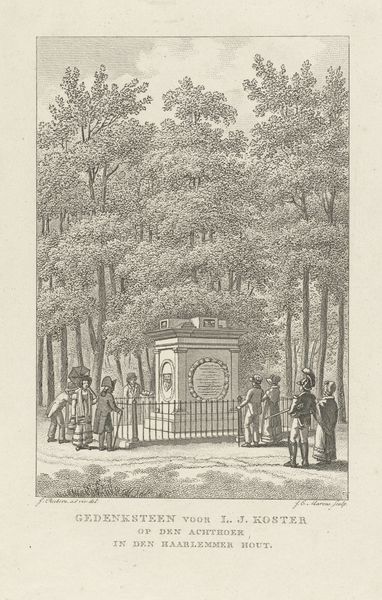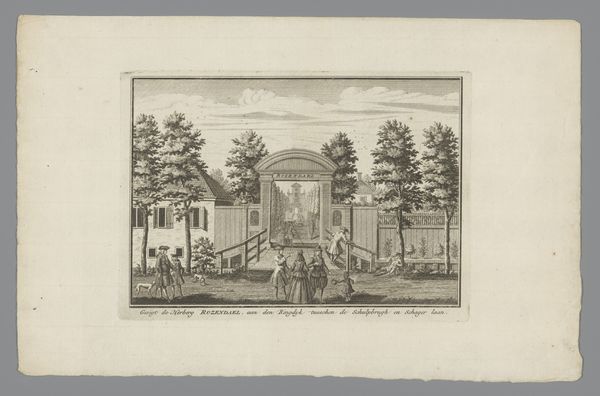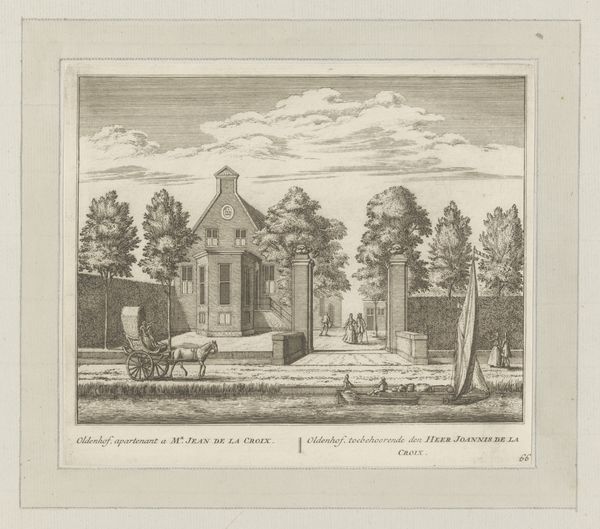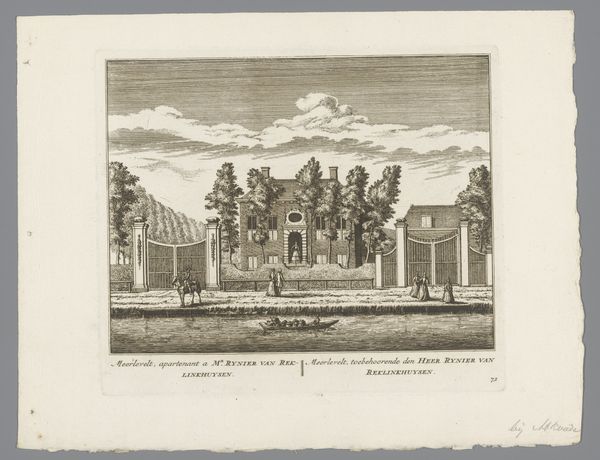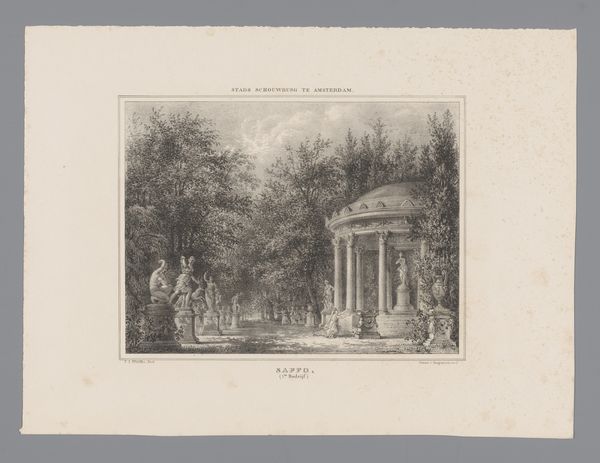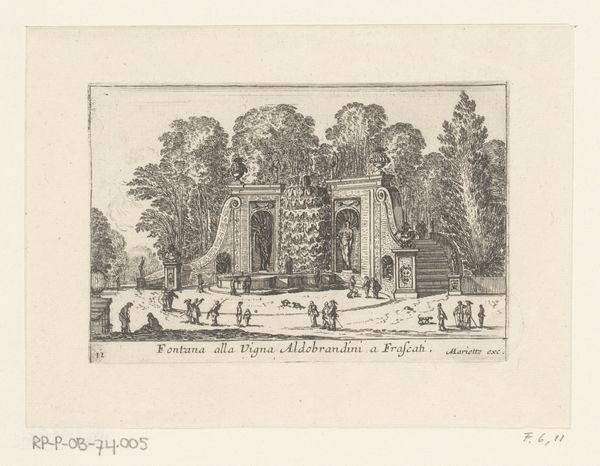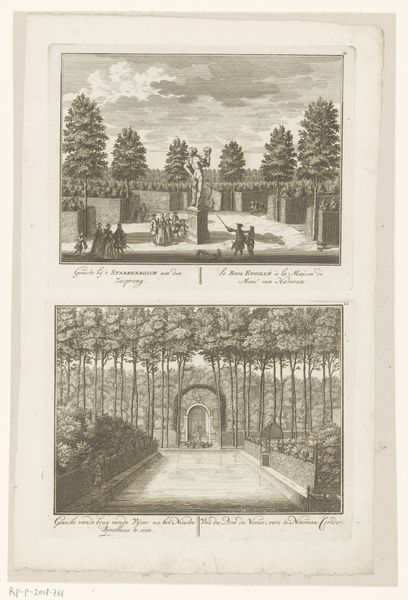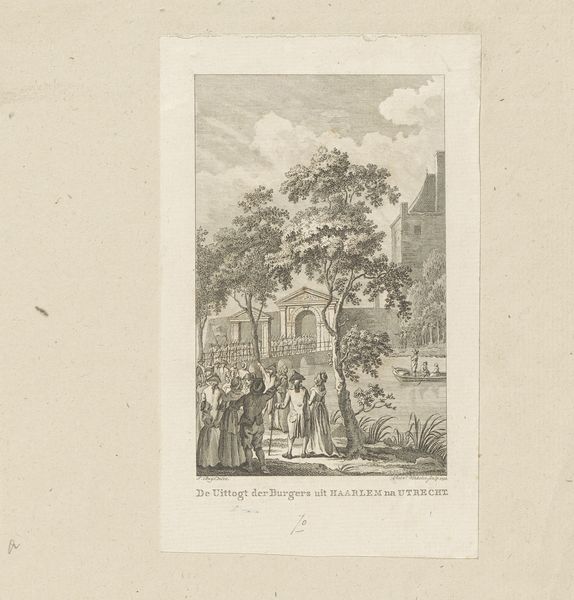
Gedenksteen voor Coster bij 400-jarig jubileum uitvinding boekdrukkunst, 1823 1824
0:00
0:00
jacobernstmarcus
Rijksmuseum
print, engraving
#
neoclacissism
# print
#
landscape
#
engraving
Dimensions: height 222 mm, width 141 mm
Copyright: Rijks Museum: Open Domain
Editor: Here we have Jacob Ernst Marcus's engraving from 1824, titled 'Gedenksteen voor Coster bij 400-jarig jubileum uitvinding boekdrukkunst, 1823', housed here at the Rijksmuseum. It depicts a group of people gathered around a memorial. I'm struck by the stillness of the scene, almost like a staged photograph. What stands out to you? Curator: It’s fascinating to see how this print functions as a form of public history. Memorials like this were – and still are – powerful tools. They visually shape our understanding of the past. The monument celebrates Laurens Janszoon Coster, the Haarlem citizen often credited in the Netherlands with the invention of printing. Editor: So, the monument serves a political purpose beyond simple commemoration? Curator: Precisely. Think about the context: 1824. The Dutch identity was being re-forged after the Napoleonic era, and after the union with Belgium. Claims of Dutch precedence in technological advancement like this bolstered national pride and legitimized Dutch cultural achievements on a European stage. Do you notice any visual cues that speak to this elevated status? Editor: Now that you mention it, the monument itself is in a classical style. Very proper and formal, evoking a sense of established history and importance. The people almost look like they're in costume as well. Curator: Yes! The figures, almost uniformly neoclassical in their attire, reflect that same sense of order and reverence. The memorial is very strategically staged within a natural setting, indicating that Dutch accomplishment in the area of print is also an inherent, almost organic element of the cultural landscape. These historical claims around Coster were often deployed politically to suggest the preeminence of the Dutch in early modern intellectual life. Editor: That's insightful. I hadn't considered how deeply intertwined art is with nation-building. I’ll certainly look at similar works with new eyes now. Curator: And I'm reminded how crucial it is to remember the inherent biases of commemorative monuments! There's always a very carefully edited narrative being presented.
Comments
No comments
Be the first to comment and join the conversation on the ultimate creative platform.

